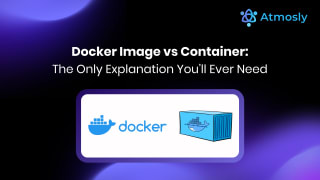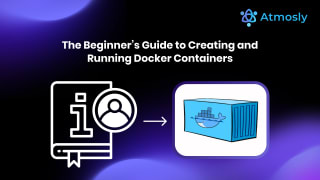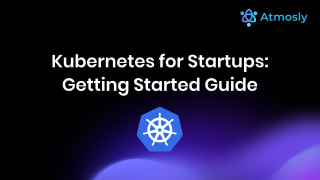In today's digital era, the pace of software development and delivery is crucial to an organization's success. Traditional approaches to these processes have undergone significant transformations over the last few decades to meet this demand. This is where DevSecOps— the fusion of Development, Security, and Operations— plays a vital role. Integrated with Continuous Integration and Continuous Deployment (CI/CD) pipelines, DevSecOps is revolutionizing the way modern software is delivered. Today, we will focus on how Atmosly contributes to this transformative process.
The Old Way: Siloed Development and Deployment
Traditionally, software development, security, and operations have been separate silos within an organization. Developers code applications, security experts review them for vulnerabilities, and operations teams manage deployment and infrastructure. This process worked but needed to be faster and often riddled with communication gaps, leading to delayed releases and security issues late in the development cycle.
The DevSecOps Revolution
DevSecOps is a cultural shift that seeks to break down these silos. It advocates for a collaborative approach integrating security into every software development life cycle phase. This means that security isn't a gatekeeper at the end of the process but a proactive partner from the beginning. In a DevSecOps culture, developers are trained to spot and remediate security issues, and security teams work closely with developers to ensure secure coding practices.
Continuous Integration/Continuous Deployment (CI/CD): The Speed Accelerator
While DevSecOps enhances the collaboration of development, security, and operations, CI/CD comes into play to supercharge the software delivery speed. CI/CD is a set of practices that automates application building, testing, and deployment. It ensures that code changes are automatically built, tested, and deployed to production or other environments, dramatically reducing manual intervention and the risk of human errors.
The Power of Integration: Atmosly's Contribution
Here's where Atmosly steps in as a catalyst for change. It integrates DevSecOps and CI/CD, providing a unified platform where developers, security experts, and operations teams can collaborate seamlessly. This integration ensures that applications are not only developed at high speed but are also inherently secure. Let's delve into how this integration benefits each aspect of the software development life cycle:
- Developers: With Atmosly's integrated CI/CD pipelines, developers can accelerate code delivery without compromising quality. They can confidently roll out new features and updates, knowing that security checks are embedded into the process, reducing the chances of security vulnerabilities.
- Security Experts: For security professionals, Atmosly means they are not merely gatekeepers but are active participants in the development process. They can create security policies, integrated security tools that are automatically enforced during CI/CD pipelines, ensuring that no insecure code makes it to production.
- Operations Teams: CI/CD ensures the deployment process is seamless and error-free. Atmosly takes this further by embedding security checks and policies into the deployment process. This means that secure, tested, and compliant code is the default setting for all deployments.
The Key Benefits of Integrated DevSecOps CI/CD with Atmosly
- Speed and Efficiency: With automation at the core, development and deployment processes become faster and more efficient. This allows businesses to deliver new features and improvements to users swiftly.
- Security by Design: Applications Deployment are inherently secure by integrating security from the start. This reduces the risk of security vulnerabilities slipping through the cracks and causing data breaches or other security incidents.
- Risk Reduction: Automation eliminates human errors, ensuring that code is continually built, tested, and deployed consistently and predictably. This reduces the risk of software failures.
- Collaboration: DevSecOps encourages cooperation and communication between teams. When developers, security experts, and operations teams work together seamlessly, it leads to a holistic understanding of the application's development, security, and deployment needs.
Conclusion
In conclusion, the integration of DevSecOps and CI/CD through Atmosly ushers in a new era of software development. It's a transformative journey that empowers businesses to develop and deploy applications at an unprecedented speed while ensuring inherent security. In a world where digital transformation and innovation are paramount, this integration isn't just an option—it's necessary for businesses looking to thrive and lead in their respective industries.
By adopting this paradigm shift and embracing Atmosly, businesses can unlock a world of possibilities where security and speed coexist harmoniously, making it a win-win for developers and their security-conscious counterparts.






